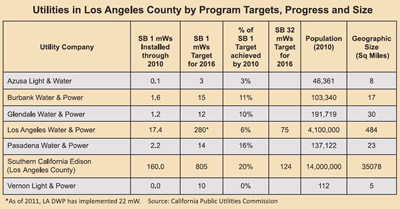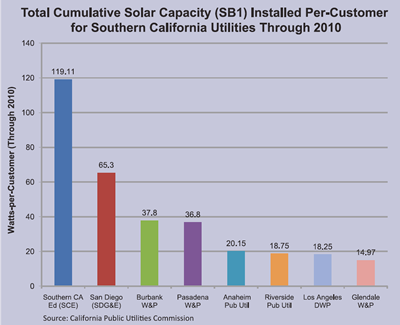Welcome to the
Run on Sun Monthly Newsletter

In this Issue: |
December, 2011
Volume: 2 Issue: 12
Westridge Chooses Run on Sun to
|
“At Run on Sun
we have a special place
in our hearts for working
with non-profits and
we would love
to help your non-profit
add solar too!”
Help Us Spread the News!





Solar Works for America Profiles Run on Sun Founder & CEO, Jim JenalAs part of its campaign to publicize the truth about the solar industry, the Solar Energy Industry Association (SEIA) has created a Solar Works for America website that contains great information about how solar is working for homes and businesses all across the country. Part of that website is a collection of profiles about the people who make up this industry, telling their stories in their own words about why the got into solar and the positive influence they see solar having in their lives and communities. We are pleased to announce that Run on Sun Founder & CEO Jim Jenal is now the subject of one of the Solar Works for America profiles. The profile - which includes a quite youthful image of Jenal, recounts his involvement in the solar industry and his prior career (one of many) as an attorney. Reinventing oneself from high-stakes litigator to solar integrator and installer might not be the most obvious career path, but according to Jenal, it works: "Now my clients are thrilled to work with me and they really value what we have done together. Making that transition has been a wonderful improvement in my life." For potential Run on Sun clients, however, the money quote is at the end:
|
Solar in LA - Leader or Laggard?Everyone knows that the Los Angeles Basis is blessed with a near year-round abundance of sunshine. Everyone also knows that LA is a power-hungry region demanding between 4,000 to 5,000 megawatts peak power depending on the season (and anticipated to increase to 6,500 megawatts by 2020). Given that, the marriage of solar power to meet LA's needs should be a no-brainer. So what's the hold-up? Why are we so far behind? A new joint study out from UCLA and USC titled "Empowering LA's Solar Workforce" places the blame on a failure of policy leadership:
By any measure, the region's utilities are just not getting the job done. This table shows the status of statewide solar program targets and progress toward completion for the seven utilities in the area: SCE and our own Pasadena Water & Power lead the way at 20% and 16% of SB1's targets being achieved, with the rest falling far behind. But given its enormous size compared to all of the other munis, LADWP's failure to lead at only 6% achieved is beyond disappointing. Clearly the failing here is not for a lack of available human resources. The report correctly notes that Los Angeles has a substantial population of workers who have been trained - thanks to innovative programs from organizations like Homeboy Industries, LA IBEW11/NECA and community colleges - but not fully employed in the solar industry due to a lack of proper policies to spur the growth of local solar installations. While LADWP has focused on utility scale installations in remote areas, it has lagged behind on installations that could be done right now in communities all across the city. A greatly expanded FiT would allow solar developers to match up high solar potential project areas with high employment need areas. Here's another way to gauge progress - how much solar power per customer has each utility installed? Again, LADWP is lagging far behind: Again, SCE leads the way with 119 Watts per customer installed. PWP is in the middle of the pack at 36.8 whereas LADWP has less than half that much (and not even a sixth of SCE's total) at a measly 18.25 Watts per customer. Faced with such dismal statistics, this is no time for short-sighted measures, but the timid, 6 MW demonstration program being presently contemplated by LADWP is far too meager to make a dent in this need. To the contrary, the report argues that a 600 MW FiT program should be implemented over the next ten years. According to the report, such a FiT must: "1) have a fixed price; 2) offer the program to participants on a first come, first serve basis; 3) have a simple application process; and 4) incur minimal administrative costs." Such a program would create good-paying local jobs and help the region meet its energy needs while protecting the environment. We couldn't agree more. |


